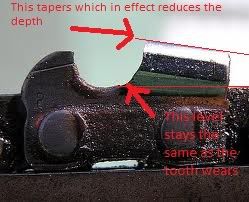MacLaren
Addicted to ArboristSite
Holey Guacamole, Batman. $125? Does it make the coffee in the mornings too? Think I'll stick with imperfect but cheap hand filing and now have 125 more reasons to take more care with the hand file, or $125 dollars towards a decent grinder.
It does just as good of job as my "decent" Silvey.........
























































